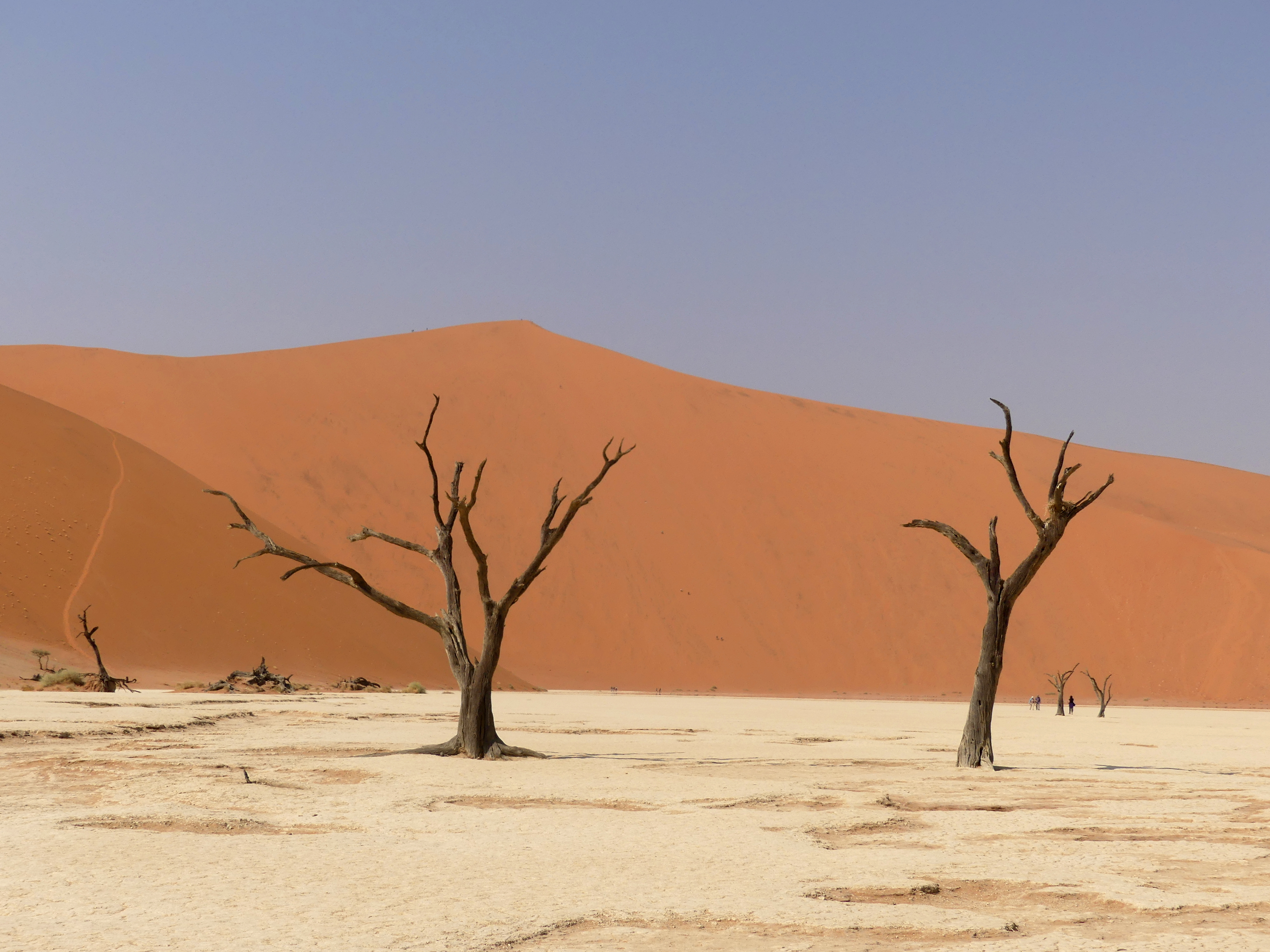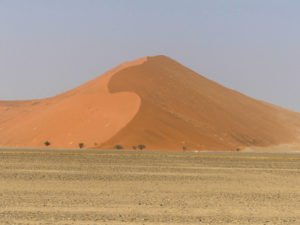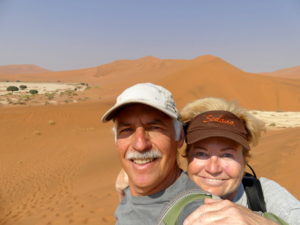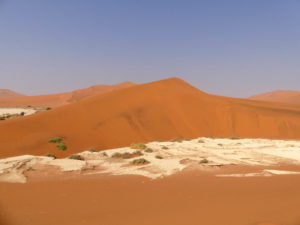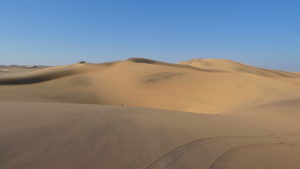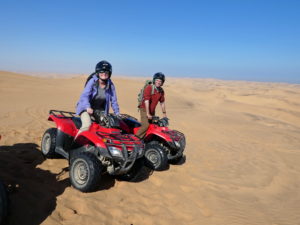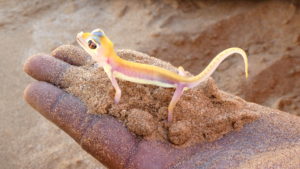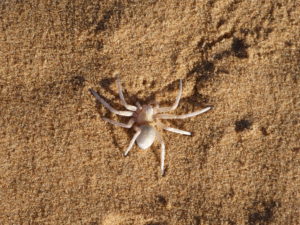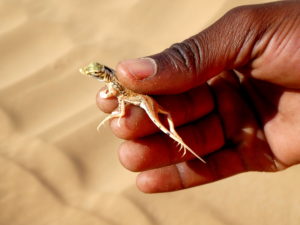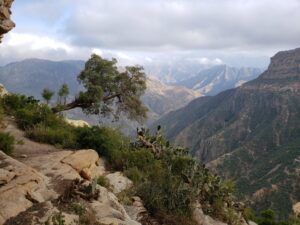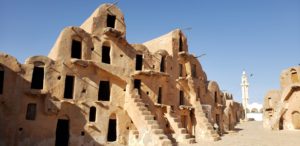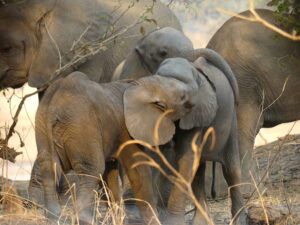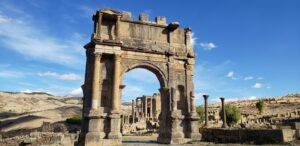Namibia is famous for the extensive sand dunes that drift to and fro near the Atlantic Ocean, the western coastline of Africa. We drove through most of this landscape, but made two special stops along the way: the UNESCO honored Namib sand sea and the dune-filled adventure capital at Swakopmund.
Namib sand sea
We drove about 70 kilometers into the south central Namibian dunes through a grand array of creamy, burnt orange sand dunes and vleis (dry waterholes and pans). This is just part of a system of 900,000 hectares (over 2.2 million acres) of land designated a UNESCO World Heritage site, a unique set of ecosystems created by the interaction of fog from the Atlantic Ocean with the shifting desert sands. We had the chance to witness the fogs rolling over the dunes at Dias Point near Luderitz.
A shifting hunk of dune makes a picturesque ripple.
These are mostly live dunes, moving with the winds and directing the flow of water through the vleis, the low-lying spots — when the rains come. You can climb the dunes, some 200 to 300 meters (1000 feet) high, up soft slipping sand or just wander about for the stark landscapes.
Happy to be here in a stunning landscape. The selfie with the dead trees was not nearly as cute…
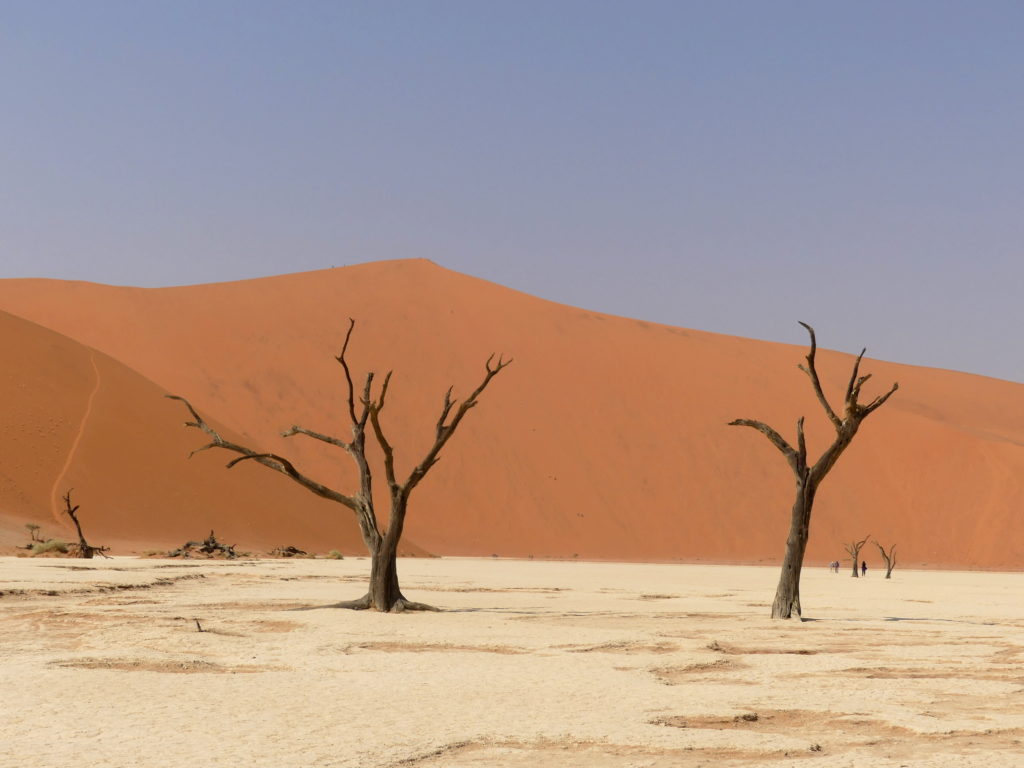
One of the most unusual spots to visit, Sossusvlei, is a large hollow surrounded by shapely dunes, where the dry lake seems to breed dead camel-thorn trees in dramatic contrast to the dunes.

Another wide view of Sossusvlei. People have been climbing the dune mountain in the back.
A dried, cracked water hole awaits the future rains patiently. When they come, waters will flow rapidly through the dune valley.
Swakopmund: the adventure capital in the dunes
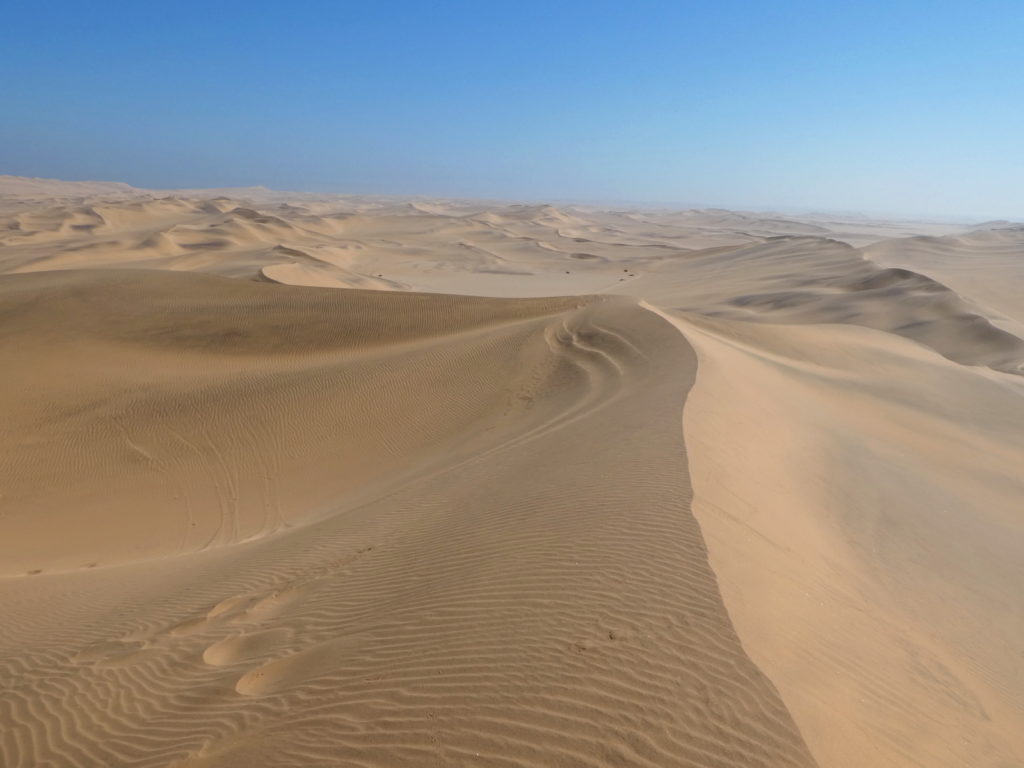
Swakopmund is one of the colonial era German towns in Namibia (see post). It lies on the edge of both the Namibian sand sea and also the windswept, watery Atlantic sea. So it has become the natural thrill capital of Namibia: windsurfing, quad biking, dune boarding and a host of other options are there for the seizing.
We opted for the quad biking with a twist. Yes, we swooped up and down for several hours in a thrilling ride along the dunes at speeds up to 55kph (35mph).
But we stopped frequently to see the beautiful, natural world hidden in the dunes…lizards, geckos, spiders that normally we would not see. Our guide dug these critters out of the sand after following their barely visible tracks, and then carefully restored them to the hidden burrows they prefer.
Palmato or web footed gecko. Its insides are visible with the light behind it.
Cartwheel spider, a tiny creature so named for its habit of rolling down the dune to capture prey. We needed to stop several times to find one of these. In the end, our guide scrambled up a dune, disappeared over the top and then re-appeared with this delicate cargo.
Sharp snouted or white lady lizard, which hides in the sand by day and feeds by night.
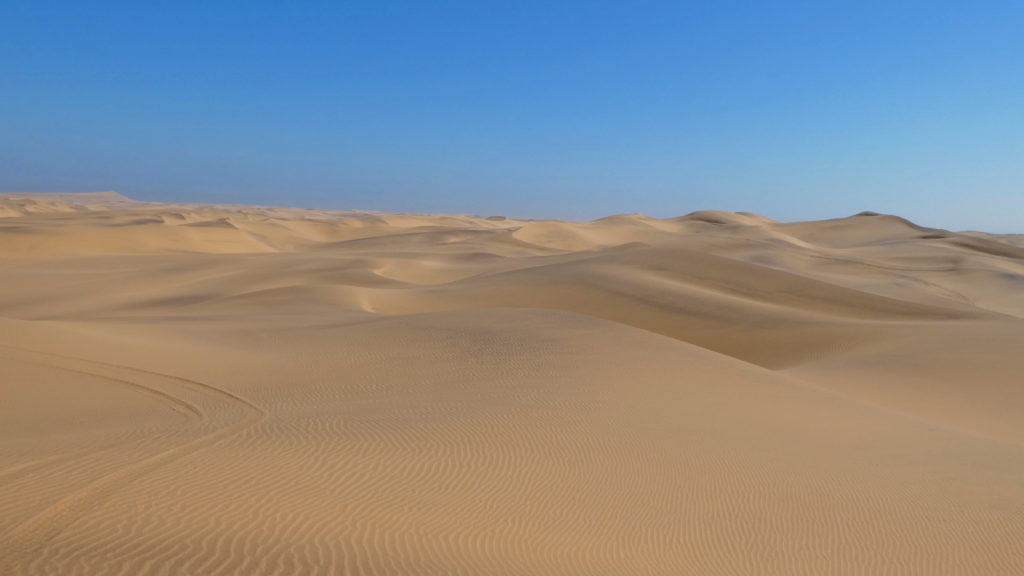
(Also, for more pictures from Namibia, CLICK HERE to view the slideshow at the end of the itinerary page.)


